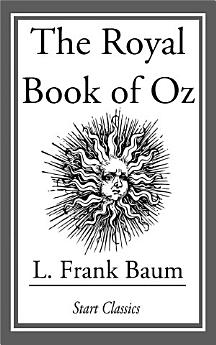The Royal Book of Oz
វិច្ឆិកា 2013 · Simon and Schuster
សៀវភៅអេឡិចត្រូនិច
132
ទំព័រ
family_home
មានសិទ្ធិ
info
reportការវាយតម្លៃ និងមតិវាយតម្លៃមិនត្រូវបានផ្ទៀងផ្ទាត់ទេ ស្វែងយល់បន្ថែម
អំពីសៀវភៅអេឡិចត្រូនិកនេះ
The Royal Book of Oz is the fifteenth in the series of Oz books, and the first to be written by Ruth Plumly Thompson after L. Frank Baum's death. Although Baum was credited as the author, it was written entirely by Thompson. Beginning in the 1980s, some editions have correctly credited Thompson, although the cover of the 2001 edition by Dover Publications credits only Baum. The Scarecrow is upset when Professor Woggle-bug tells him that he has no family, so he goes back to the corn-field where Dorothy Gale found him to trace his "roots." Dorothy and the Cowardly Lion search for him, eventually meeting with a knight, Sir Hokus, the Doubtful Dromedary and the Comfortable Camel. In this novel the Scarecrow discovers that, in a previous incarnation, he was human. To be precise, the Scarecrow was the King of the Silver Islands, a quasi-Chinese kingdom located underground beneath the Munchkin region of Oz. When Dorothy first discovered the Scarecrow (in The Wonderful Wizard of Oz) he was hanging from a scarecrow-pole in a cornfield; it now develops that this pole descended deep underground to the Silver Islands, where it penetrated the king's grave. After spending some time in his former kingdom among the Silver Islanders, the Scarecrow decides to return to Oz and continue his current existence. The Royal Book of Oz acknowledges that an Oz character can die.
អំពីអ្នកនិពន្ធ
Best known as the author of the Wizard of Oz series, Lyman Frank Baum was born on May 15, 1856, in New York. When Baum was a young man, his father, who had made a fortune in oil, gave him several theaters in New York and Pennsylvania to manage. Eventually, Baum had his first taste of success as a writer when he staged The Maid of Arran, a melodrama he had written and scored. Married in 1882 to Maud Gage, whose mother was an influential suffragette, the two had four sons. Baum often entertained his children with nursery rhymes and in 1897 published a compilation titled Mother Goose in Prose, which was illustrated by Maxfield Parrish. The project was followed by three other picture books of rhymes, illustrated by William Wallace Denslow. The success of the nursery rhymes persuaded Baum to craft a novel out of one of the stories, which he titled The Wonderful Wizard of Oz. Some critics have suggested that Baum modeled the character of the Wizard on himself. Other books for children followed the original Oz book, and Baum continued to produce the popular Oz books until his death in 1919. The series was so popular that after Baum's death and by special arrangement, Oz books continued to be written for the series by other authors. Glinda of Oz, the last Oz book that Baum wrote, was published in 1920.
វាយតម្លៃសៀវភៅអេឡិចត្រូនិកនេះ
ប្រាប់យើងអំពីការយល់ឃើញរបស់អ្នក។
អានព័ត៌មាន
ទូរសព្ទឆ្លាតវៃ និងថេប្លេត
ដំឡើងកម្មវិធី Google Play Books សម្រាប់ Android និង iPad/iPhone ។ វាធ្វើសមកាលកម្មដោយស្វ័យប្រវត្តិជាមួយគណនីរបស់អ្នក និងអនុញ្ញាតឱ្យអ្នកអានពេលមានអ៊ីនធឺណិត ឬគ្មានអ៊ីនធឺណិតនៅគ្រប់ទីកន្លែង។
កុំព្យូទ័រយួរដៃ និងកុំព្យូទ័រ
អ្នកអាចស្ដាប់សៀវភៅជាសំឡេងដែលបានទិញនៅក្នុង Google Play ដោយប្រើកម្មវិធីរុករកតាមអ៊ីនធឺណិតក្នុងកុំព្យូទ័ររបស់អ្នក។
eReaders និងឧបករណ៍ផ្សេងទៀត
ដើម្បីអាននៅលើឧបករណ៍ e-ink ដូចជាឧបករណ៍អានសៀវភៅអេឡិចត្រូនិក Kobo អ្នកនឹងត្រូវទាញយកឯកសារ ហើយផ្ទេរវាទៅឧបករណ៍របស់អ្នក។ សូមអនុវត្តតាមការណែនាំលម្អិតរបស់មជ្ឈមណ្ឌលជំនួយ ដើម្បីផ្ទេរឯកសារទៅឧបករណ៍អានសៀវភៅអេឡិចត្រូនិកដែលស្គាល់។








